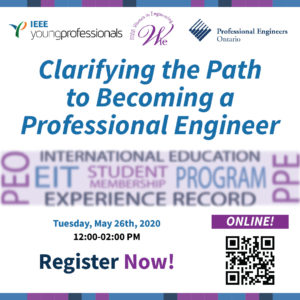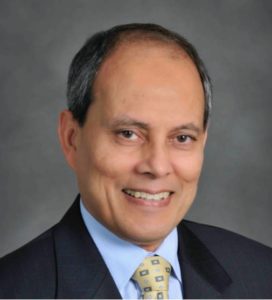Events
On behalf of the conference organizing committee,
we invite you to the virtual Photonics North Conference on May 26-28,
2020. In the midst of a global crisis,
we look forward to meeting with all of you, our colleagues, as we carry on with
the work of advancing optical science and engineering. Join us for outstanding
plenary talks from inspirational thought leaders. Join us for the very best
work from respected and established researchers. Join us for talks from
emerging researchers, presenting what is surely the opening work of brilliant,
burgeoning careers.
Photonics and optics are finally seeing widespread adoption and significant growth into new markets. Photonic devices are being applied to sensing, communications, and even quantum computing. High speed fiber optics and highly integrated subsystems are essential to the rollout of 5G systems. There has never been a better time for research, development, and training in photonics and Photonics North is essential for developing and promoting the ecosystem.
Â
Conference Chairs
Gord Harling
President and CEO, CMC Microsystems   Â
P. Scott Carney
The Institute of Optics, University of Rochester​   Â

In this time of social distancing, we are pleased to announce that all the team members of IEEE YP and WIE Ottawa Sections are fully committed to providing online interaction and support to our community! In partnership with Professional Engineers Ontario, we present an online talk in “Clarifying the Path to Becoming a Professional Engineer.”
If you are an engineering undergraduate or post-graduate student, or a recent graduate starting out your engineering career, then this seminar might be for you. In it you will learn:
- What is PEO?
- What engineering experience is PEO looking for once I graduate?
- I have international engineering education and experience; how is that evaluated by PEO?
- How is my engineering experience evaluated by PEO?
- How do I prepare my Experience Record?
- What is the PPE?
- What is the EIT Program and the Student Membership Program?
The emphasis of this webinar will be on the P. Eng. licensure process – what PEO is looking for. The webinar will focus on how engineering experience is evaluated and how you can facilitate the process. Learn the dos and don’ts of preparing your licensing application for evaluation.
To participate, you will require: internet connection to view the webinar, phone access to dial into the conference for audio.
We look forward to speaking with you!
IEEE CANADA TECHNOLOGY LEADERSHIP WEBINAR SERIES – III
Speaker: Tom Coughlin of IEEE USA
Topic: IEEE-USA Supports Public Policy For A Better WorldÂ
IEEE-USA supports public policy and career and member services for IEEE members in the USA. This talk will include a brief discussion on what IEEE-USA does and will focus on its public policy activities to support future technologies, funding of science and technology, immigration policies that support a path to citizenship and support for engineers and technologists. I will also discuss the impact of the COVID-19 epidemic and what what IEEE and IEEE-USA is doing to help its members as well as society as a whole, to recover from this extraordinary event. This talk will include discussion of the future of work and the role of technology to enable remote work and new tools to work together in the real world even when we can’t be there physically.
Biography:
Tom Coughlin, President, Coughlin Associates is a digital storage analyst and business and technology consultant. He has over 39 years in the data storage industry with engineering and management positions at several companies. Coughlin Associates consults, publishes books and market and technology reports (including The Media and Entertainment Storage Report and an Emerging Memory Report), and puts on digital storage-oriented events. He is a regular storage and memory contributor for forbes.com and M&E organization websites. He is an IEEE Fellow, Past-President of IEEE-USA and is active with SNIA and SMPTE. For more information on Tom Coughlin and his publications and activities go to www.tomcoughlin.com.
Title: Josephson Arbitrary Waveform Synthesizer as a Quantum Standard of Voltage and Current Harmonics
Speaker: Dr. Dimitrios Georgakopoulos, Senior Research Scientist, National Measurement Institute, Sydney, Australia
Date/Time:Â Thursday, July 09, 2020, 6:30 pm – 7:30 p.m. EDT
Abstract: Josephson arbitrary waveform synthesizers (JAWS) are becoming a viable technology for national metrology institutes and industry to establish quantum standards of direct and alternating voltage. At the National Measurement Institute of Australia (NMIA) we have extended the application of the JAWS to provide a standard of both the magnitude and the phase of harmonics in a distorted waveform. Harmonic analysis is critical in a number of industrial applications such as electric power systems, power electronics, characterization of systems and materials and acoustics and vibration. At present, in the calibrations of power analyzers, the traceability of the magnitude of the harmonics is based on ac-dc transfer measurements. However, there is a gap in the traceability of the phase of the harmonics relative to the fundamental. The NMIA calibration system uses a JAWS chip from the National Institute of Standards and Technology (NIST), USA, a precision inductive voltage divider and a set of current shunts designed and manufactured by NMIA. For distorted waveforms with harmonic magnitudes from 5% to 40% of the fundamental, the calibration system can measure odd harmonics up to the 39th with magnitude uncertainties better than 0.001 % of the fundamental for voltage (from 0.01 V to 240 V) and current (from 0.005 A to 20 A) waveforms. The best phase uncertainties range from 0.001° to 0.010° (k = 2.0), depending on the harmonic number and harmonic magnitude. We anticipate that the ability of the JAWS to generate distorted waveforms with the lowest possible uncertainty in the magnitude, and phase spectra will make it a unique tool for low-frequency spectrum analysis.
Speaker’s Bio: Dimitrios Georgakopoulos (IEEE AM’11–M’12–SM’12) was born in Athens, Greece, in 1972. He received his B.Eng. degree in electrical engineering from the Technological Educational Institution of Piraeus, Egaleo, Greece, in 1996; his M.Sc. degree in electronic instrumentation systems from the University of Manchester, Manchester, UK, in 1999; and Ph.D. in electrical engineering and electronics from the University of Manchester Institute of Science and Technology, Manchester, UK, in 2002. From 2002 to 2007, he worked as a research scientist at the National Physical Laboratory, UK. In 2007, he joined the National Measurement Institute, Australia, as a research scientist, where he has been working on the development of quantum voltage standards and low frequency electromagnetic compatibility (EMC) standards. Dr Georgakopoulos is an Associate Editor of the IEEE Transactions on Instrumentation and Measurement, member of the IEEE IMS Measurements in Power Systems Committee (TC‑39), member of the NATA Accreditation Advisory Committee for Calibrations, and member of the American Association for the Advancement of Science (AAAS), USA.
Admission: Free, but registration is required at https://events.vtools.ieee.

Webinar: Role of the Smart Grid in Facilitating the Integration of Renewables
Speaker: Prof. Dr. Saifur Rahman, Director, Virginia Tech Advanced Research Institute, USA, IEEE Power & Energy Society (PES) President 2018-2019, IEEE PES Distinguished Lecturer
Date/Time: Tuesday, July 28, 2020, 6:30 pm – 7:30 p.m. EDT
Admission: Free, but registration is required: https://events.vtools.ieee.org/m/234594
For more details, please visit: https://www.ewh.ieee.org/soc/pes/ottawa
Abstract – With the focus on environmental sustainability and energy security, power system planners are looking at renewable energy as supplements and alternatives. But such generation sources have their own challenges – primarily intermittency. It is expected that the smart grid – due to its inherent communication, sensing and control capabilities – will have the ability to manage the load, storage and generation assets (including renewables) in the power grid to enable a large-scale integration of distributed generation. In a smart grid, information about the state of the grid and its components can be exchanged quickly over long distances and complex networks. It will therefore be possible to have the integration of sustainable energy sources, such as wind, solar, off-shore electricity, etc. for smoother system operation. But in order for this to be possible, the electric utility will have to evolve, and change their ways of operation to become an intelligent provider of these services. This lecture introduces the operational characteristics of renewable energy sources, and various aspects of the smart grid – technology, standards and regulations. It also addresses the interplay among distributed generation, storage and conventional generation to provide an efficient operational strategy in the context of the smart grid.

